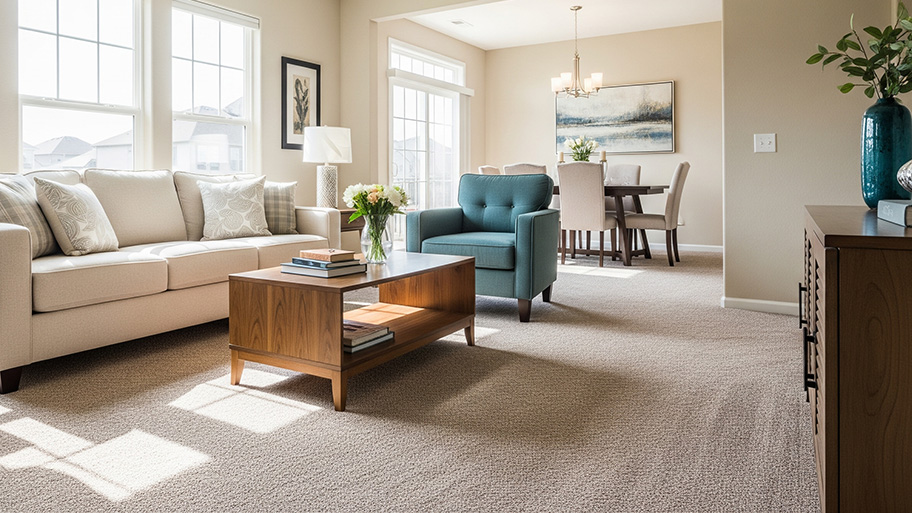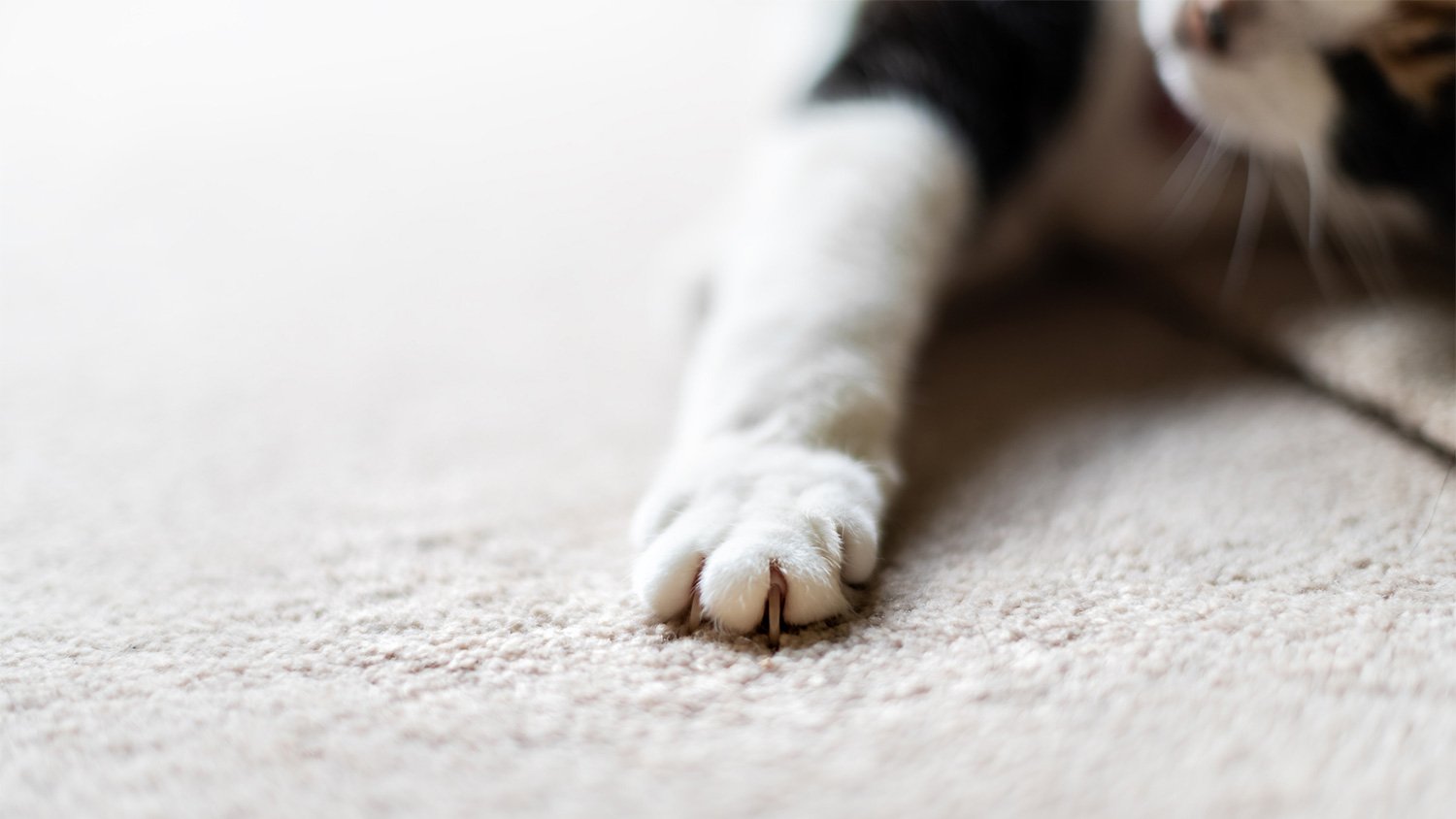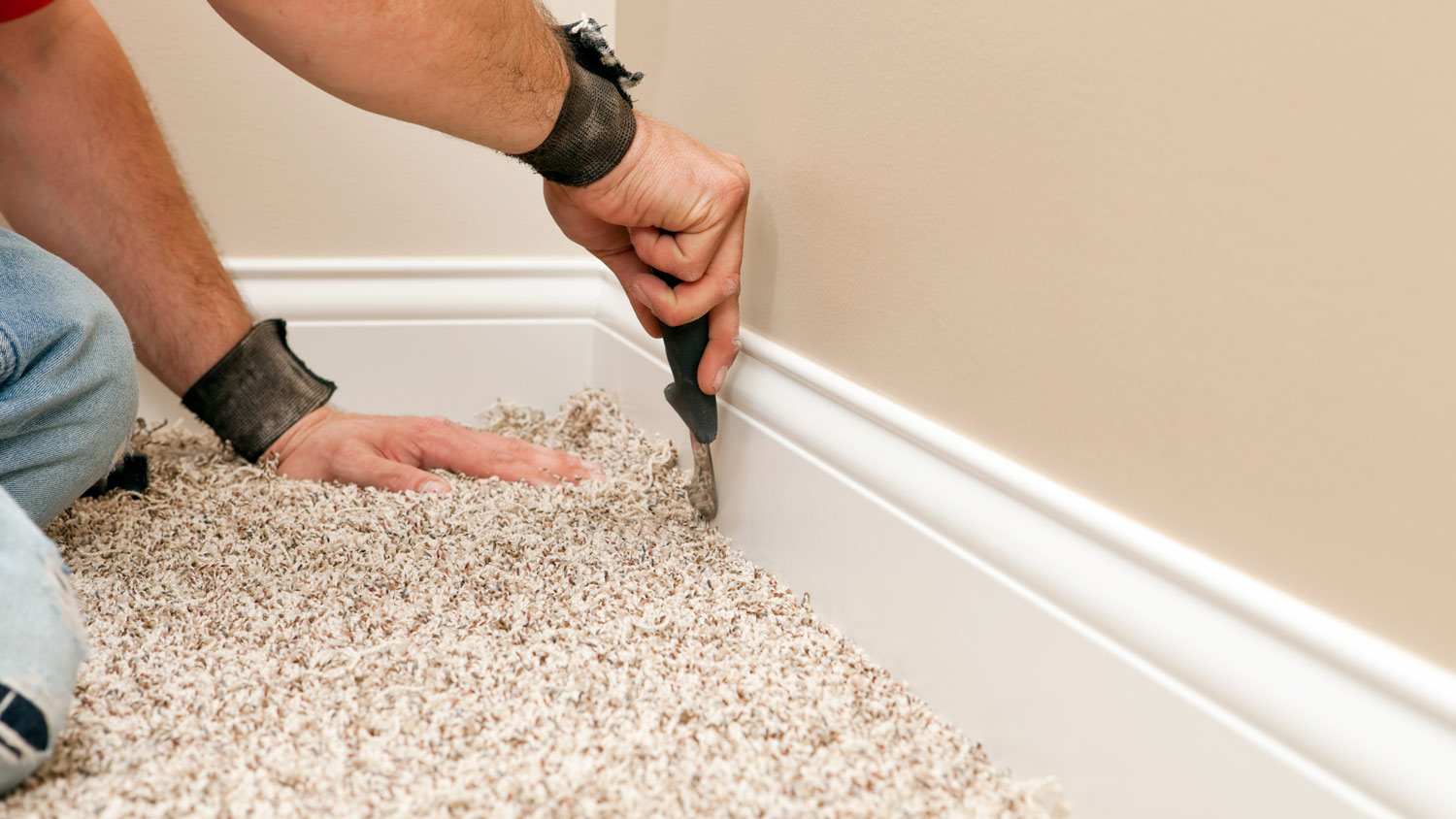
Carpet installation costs vary depending on the type of carpet, difficulty of the installation, and labor costs. We break it all down in this article.
Here, we close the loop on damage to Berber carpets


Particularly popular in the ‘90s, Berber carpet was once only used in high-traffic areas, like basements and living rooms. Lately, though, it has been making a comeback and is now being installed in many areas of the home. This resurgence is largely thanks to new colors—it is not only available in the traditional speckled style, but comes in solid hues as well, making it versatile and able to fit in with every kind of home decor.
Many homeowners love its low cost and easy cleanup potential, as its looped design repels spills better than other carpets. That same design, however, can create snags that quickly go from minor to major, especially if you have small kids or pets running around. Learn the ins and outs of Berber carpet repair in this guide to taking care of common repair problems in no time.
There are lots of great things about Berber, but one disadvantage is that the carpet loops are easily snapped. Loop damage can happen for a variety of reasons, like dragging carpet across the floor, pets clawing at the carpet, or even a loose strand getting pulled by a vacuum cleaner.
When faced with serious carpet damage, you will likely consider carpet removal costs and everything else associated with reinstallation. However, in many cases, you do not have to go that far. For the most part, you can repair common issues like loop damage, burn marks, missing patches, stains, and the like without needing to consider replacement.
Carpet repair costs $150 to $250 for snags, stains, and burn damage. Pet damage can cost $150 to $1,000, depending on how bad it is.
Here are five common ways your Berber can be damaged, and what you can do about it.
All types of Berber carpet are susceptible to loop damage. Single-loop (otherwise known as single-strand) damage occurs when a strand of carpet gets pulled up. It tends to look like when you have cut the grass and left one long weed sticking out in the middle.
Damage to a single strand (or even two to three strands) is a simple fix. To get your Berber looking new again, you should gather:
A hot glue gun
A flathead screwdriver
Small scissors
Using either your fingers or a screwdriver, see if you can simply push the strands back down. Often enough this works and you do not have to do anything else.
If the strands refuse to stay down just with pressure, you will want to bust out the hot glue gun. Take the strand, push it down, and glue it in place using the tiniest bit of glue. This will prevent the carpet from snagging again—and may even hold up better than the rest of the carpet in the long run.
Alternatively, if the damaged loop is in a not-so-noticeable area, you can get away with just cutting the loops. It will not cause the carpet to unravel more, and you do not have to worry about it being seen.

Multi-loop damage can happen from vacuuming, scampering pets and children, or by moving furniture. In this case, you typically have multiple loops coming up, and the carpet suddenly looks like a bunch of yarn was dropped on the floor.
You will need to patch up the affected carpet so it does not keep unraveling. Patching carpet really only works, though, if the damaged area is one square foot or less in size; otherwise, the fix might be too obvious to the naked eye. If there is lots of damage or multiple areas of damage in one room, consider recarpeting entirely.
To do this, you should collect the following:
A utility knife
An awl or capped pen
A spare piece of carpet—ideally, you have a few scraps left over from the initial installation, or you can ask the manufacturer for some if the style is still in production. If neither of those options is possible, cut a square from an inconspicuous place, like underneath a TV stand or the floor of a closet.
Double-sided carpet tape
After you have your tools ready, you can begin.
Mark the area you will cut with the awl or the cap side of the pen. Drag the tool into a square shape, separating the carpet fibers, so you only cut out what you need.
Cut out the square area with a utility knife; try only to cut into the carpet backing, not into the Berber loops.
Trace the shape of the cut-out piece on the area where you will gather the spare carpet using the awl or the pen.
Cut the replacement patch using the utility knife, once again trying only to cut into the backing, not the fibers.
Cut two strips of double-sided carpet tape to cover two edges of the patch’s backing.
Remove one side of protective paper from the tape strips and apply them to the floor where the patch will go.
Remove the other side of the protective paper, and put the patch into place.
If your Berber carpet has patterns and designs, this DIY fix might not look too great. You may want to call a carpet repair company near you so they can seamlessly install a new piece.
Burn damage can happen and, as long as the damage is only done to the fibers and not to the carpet pad underneath, you can DIY a quick fix.
Prepare the following:
Scissors
A bit of matching carpet—you will not be cutting out a patch, but you will need to “borrow” some fibers from the area
A glue gun
To repair the burned carpet, remove the burnt fibers by cutting them out with your pair of scissors. From there, locate your out-of-the-way spot of carpet (like behind a door or inside of a closet) that you are willing to sacrifice.
Next, cut some undamaged fibers with your scissors until you have enough to cover the burn patch. Finally, glue the untouched fibers over the damaged spot with a glue gun.
If the burn damage did get into the carpet pad, it is better to replace the area as you would for multi-loop damage or replace the entire carpet.
You might have missing patches due to a variety of reasons; for instance, some pets like to chew on or scratch at carpeting, and some vacuum cleaners snag on the strands, creating many spots of missing loops over time.
If there are only a couple of small missing patches of carpet (measuring less than one square foot), you can follow the same procedure as described above for areas with burn damage. If there are large sections that cannot be covered with the amount of spare carpet you have around, it is time to call in a professional to replace the entire Berber.

Tackling stains depends on what material your Berber carpet is made from. To tackle wool Berber, steam clean the carpet. This will help to remove the dirt and grime found deep in the carpet fibers.
For simple stains on nylon, consider using a mixture of baking soda and vinegar to clean and revive your carpet pile. Do not scrub too hard, though, as this could cause the loops to unravel.
While the most common issues with Berber carpet can be repaired, sometimes you have to go with a full replacement. Problems that can be repaired include snags, runs, stains, bare patches, holes, and burn damage.
A full replacement is certainly needed when your carpet has extensive water damage. You may notice visible mold or mildew, or notice a strong smell. Your carpet may have discoloration, or there may be ripples in the flooring. Often, water damage is not isolated to just your carpet, and you may need to replace your underlayment and even repair your subfloor.
Additionally, you should look at how old your Berber carpet is. The average lifespan is 10 to 15 years, so if it has been longer than that, it may be a good time to replace the carpet, regardless of whether there are issues that need repair or not. In these cases, you should hire a carpet removal company and installer near you.
DIYing your Berber carpet repair will likely cost $25 or less. So, as long as you have the time and patience to get it done, this is the most affordable option. Otherwise, you can hire a carpet repair company to help get your flooring back to looking its best. For professional help, you can expect to pay $150 to $250 for common issues including snags, stains, and burn spots.
From average costs to expert advice, get all the answers you need to get your job done.

Carpet installation costs vary depending on the type of carpet, difficulty of the installation, and labor costs. We break it all down in this article.

The cost to carpet stairs depends on the number of stairs, material choice, and staircase type. Read on to calculate your project expenses

Get a clear estimate for carpet repair cost. Learn what impacts pricing, compare repair types, and find ways to save on your next carpet project.

Want fluffy floors but not those large and slippery area rugs or custom cuts from expensive rolls of carpet? Learn all about types of carpet tiles.

Many homeowners want to know who installs carpet. Discover the best experts to work with, guaranteeing soft and cozy results.

Learning how to stretch carpet is a great way to protect your investment and keep everything tidy. Here are the steps to successfully restretch carpet on your own.